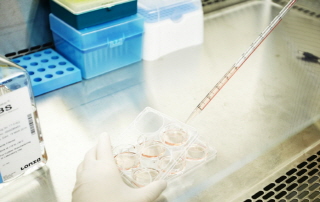STC Life Successfully Differentiates a Neuron using its Newly Elicited Pluripotent Stem Cells without side effects by natural compound (STC-nEPS)

STC Life Successfully Differentiates a Neuron using its Newly Elicited Pluripotent Stem Cells without side effects by natural compound (STC-nEPS)
Korea Economic Daily
May 14, 2014
Stem Cell Treatment & Research Institute (STRI) and 97.7 B&H Clinic under STC Life announced that they have successfully managed to regenerate tissue from the brain’s damaged part by inducing a Newly Elicited Pluripotent Stem Cells without side effects by natural compound (STC-nEPS) capable of differentiating into different tissues or cells and by studying methods to efficiently differentiate STC-nEPS into a nervous system.
Upon inducing into a Newly Elicited Pluripotent Stem Cells without side effects by natural Compound (STC-nEPS), research team led by Dr. Sang-hyun Lee at Stem Cell Treatment & Research Institute (STRI) enabled its efficient and speedy differentiation into a neuron, using different growth Factors and molecular compounds.
As a result, the team was able to witness an axon, characteristic of a neuron, growing after twelve Days after inducing neuronal differentiation from a Newly Elicited Pluripotent Stem Cells without side effects by natural compound (STC-nEPS). Neuronal differentiation showed twice efficacy as compared to the MSC(Mesenchymal Stem Cells) and this was confirmed using a neuromarker that is only revealed in a neuron.
The team removed the hippocampus (brain part that controls memory) from a lab mouse, sliced it into 300 micrometers for cultivation and then disconnected its neural tissue by causing physical damage. After causing damage, STC-nEPS was placed near the hippocampus and the research team was able to witness that the stem cells moved toward the damaged part. Not only was the damaged part regenerated, it actually created more neurons than before.
Chairman Kye-ho Lee at STC Life announced that the team plans to bring forth this outcome into a clinical trial for incurable neurodegenerative diseases including Parkinson and Alzheimer’s disease and stroke. He added that the same may be applied to cures for physical damages including spinal and neural paralysis.






